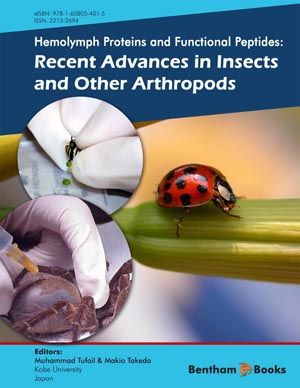Abstract
An insect’s ability to endure and recover from stress is dependent on the suite of behavioral, biochemical, molecular and physiological mechanisms at its disposal when conditions become unfavorable. Expression of proteins to lessen and repair stress-related damage represents one of the most common and critical response mechanisms used by insects to counter the damage caused by traumatic periods. This chapter provides a comprehensive review of the regulation and function of proteins, both conventional and unconventional (not typically associated with stress), that prevent, alleviate and repair damage caused by environmental stress in insects as well as closely-related arthropods. First, we discuss situations known to be traumatic for insects, particularly those that have been previously documented as leading to negative consequences such as mortality or reduced fecundity. Stress signaling pathways and transcriptional regulation of stress proteins in insects are discussed due to their importance for triggering the initiation and subsequent regulation of the insect stress response. Heat shock proteins are reviewed individually since their increase has been documented in many insect species during and after stress. A synopsis is provided of how antioxidant proteins act to prevent damage caused by reactive oxygen species. Cytoskeletal and membrane structure changes have been documented during stress, and functions of these alterations, particularly during dehydration and cold exposure, are reviewed. Fluid and metabolite movement within insects is extremely important during periods of cold and dehydration, and proteins involved in regulating these movements are discussed. Similarly, proteins that buffer damage when the hydration state of an insect is altered are described. Aging, metabolism and reproduction changes that have been tied to traumatic conditions and stress protein expression, particularly for Drosophila, are assessed. Lastly, we provide a brief overview of other factors (i.e. polyols and sugars) that function in conjunction with proteins to prevent damage during stress. The complexity of the insect stress response far exceeds the usual suspects and includes proteins normally thought to function during unstressful conditions or only in a housekeeping manner (unconventional stress proteins). Our aim is to provide a review of all proteins, not just those typically associated with traumatic conditions, involved during the tolerance to and recovery from stress within insects and their close relatives.
Keywords: Stress proteins, stress signaling, transcriptional regulation, heat shock proteins, antioxidants, ice active proteins, fluid and metabolite movement, aging, metabolism, reproduction, traumatic conditions.






















